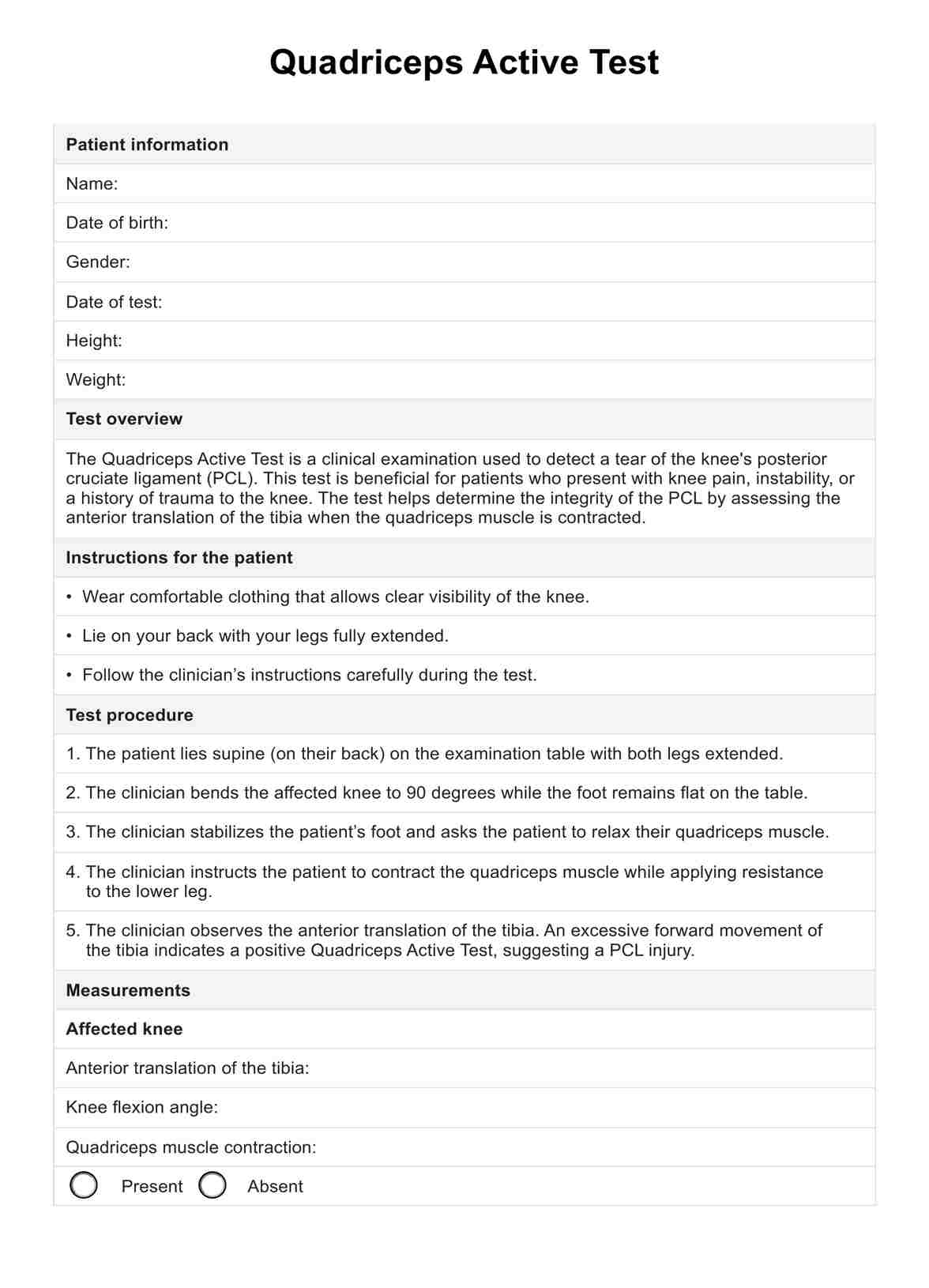The Quadriceps Active Test diagnoses posterior cruciate ligament (PCL) injuries by assessing the anterior tibial translation when the quadriceps are activated.

Quadriceps Active Test
Streamline your physical therapy practice with our Quadriceps Active Test template. Improve accuracy, efficiency, and patient outcomes with Carepatron's comprehensive software.
Use Template
Quadriceps Active Test Template
Commonly asked questions
Patients experiencing knee pain, instability, or suspected PCL injuries, especially after trauma or sports injuries, should undergo the Quadriceps Active Test for accurate diagnosis.
Using a standardized template ensures consistent and comprehensive documentation, improving diagnosis accuracy and subsequent treatment plans' effectiveness.
EHR and practice management software
Get started for free
*No credit card required
Free
$0/usd
Unlimited clients
Telehealth
1GB of storage
Client portal text
Automated billing and online payments











